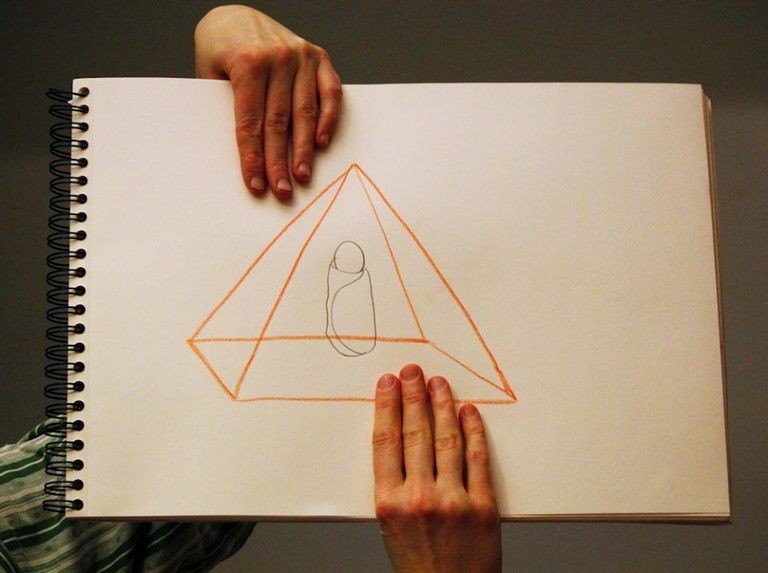
In the past a figural statue represented political or religious ideals. However the attitude of present-day society toward politics and religion is rather critical. That is why the question comes up of what a figural statue means standing as a representative of social values today? Štursa’s group of statues from Hlávkův most with figures symbolizing Humanity and Industry can well serve as both an example and inspiration: an allegory on the border between and ideal and reality, which are closely related, thus naturally complementing as well as repelling one another.
27.1. / Humanity without Industry
10.2. / Opus et Humanitas
24.2. / Personality Model without (Humanity and Industry)
In January and February Anna Hulačová and Václav Litvan were our guests at the INI Gallery. They prepared a series of events under the name Humanity without Industry, in which they reacted to Štursa’s statue Humanity and Industry (1913) from the nearby Hlávkův most. Hulačová and Litvan then transformed step by step this inspiration of a hundred years old group of statues into a three-part installation, which was to prove how lively the topic is still today.
The idea of preserving “humanity without Industry” is a utopist vision, whose conditions were examined by the artists from various angles in three successive events at the INI Gallery. Both artists being life partners and above all sculptors, used to produce finished exhibition objects – mostly figurative sculptures – in their joint project for the INI Gallery they chose object layering, which gave them the opportunity to carry out a presentation model for several successive encounters.

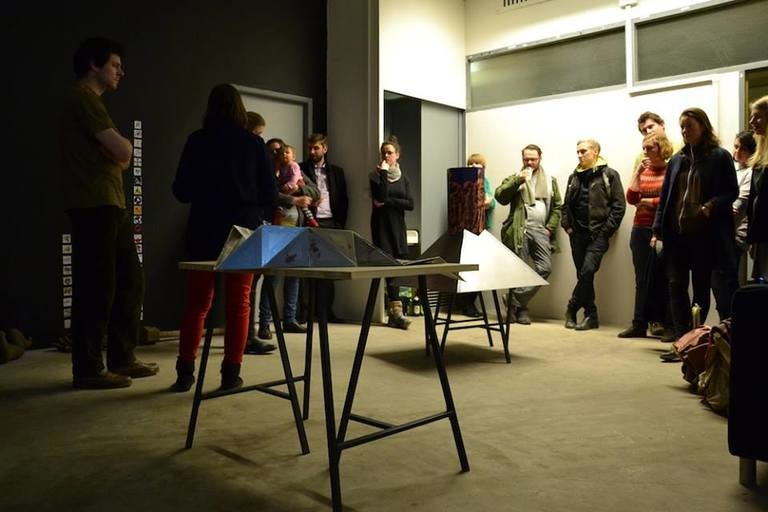
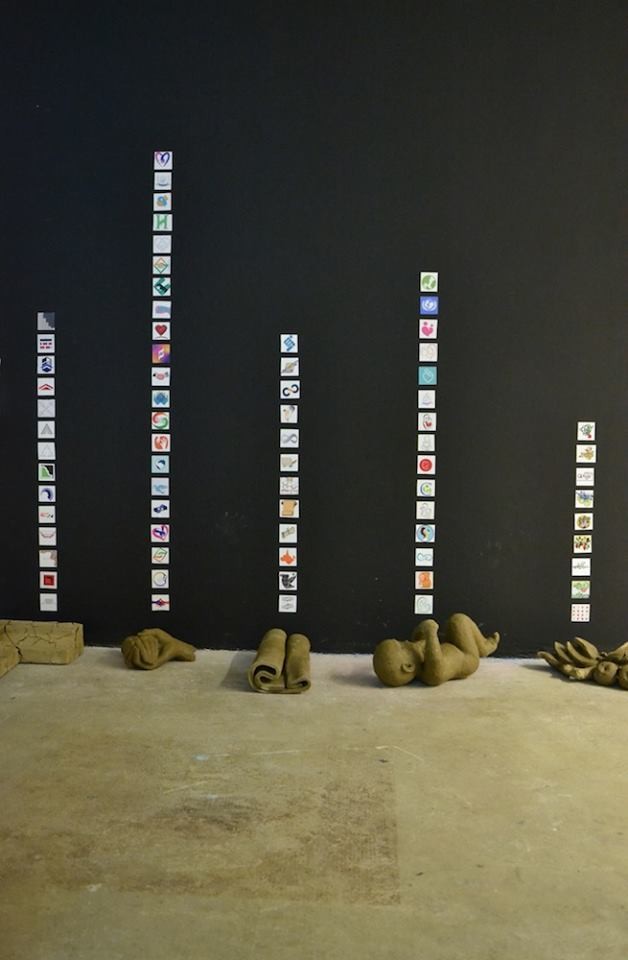
For the first meeting at the end of February 2016 they prepared an esoteric situation, in which a pyramid model was presented, something each of us should have in the attics of our house, as it protects everything beneath itself. For this moment our pyramid - made according to a YouTube manual, the same as the ham party-rolls /Mikrofonky© hard to resist (according to Monika Marešová recipe) – shielded with its power clay statuettes of symbols, borrowed from Humanity and Industry original statues: the baby, the hammer, the beam, and hands.

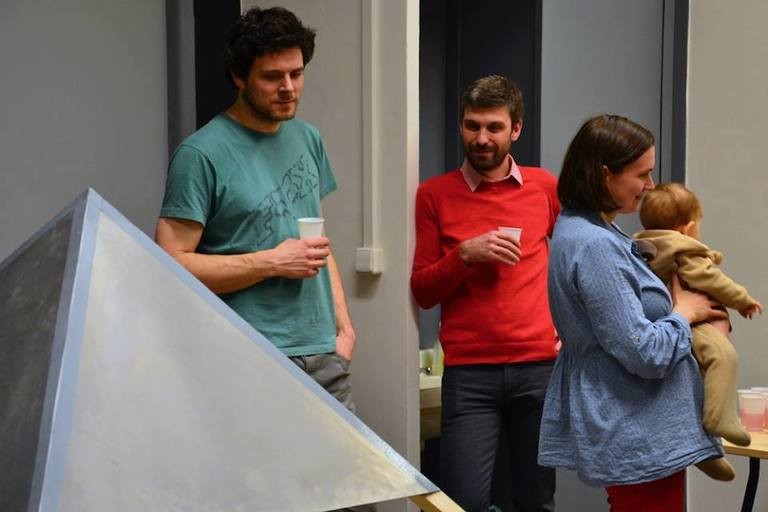
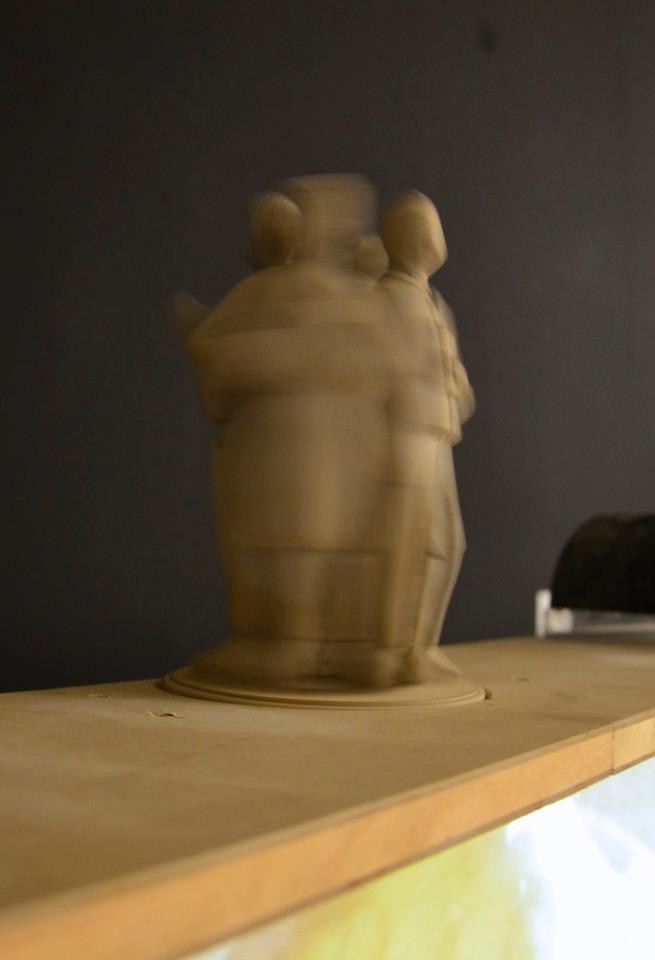
In the project’s second stage, called Humanity without Industry, the artists turned to the roots of the iconographic motive of the group of statues and its contemporary digital representation. From art history they picked the type of Madonna and Child, in a way that unifies both Christian ideals, however processed by them with the help of computer once on a poster surface as seemingly three-dimensional, in the second case quite on the contrary, a print pasted to a three-dimensional object, based on the pyramid model from the previous part. In the Latin name in the title (Opus et Humanitas) they especially focused on the meaning of the word “opus” – piece of work, which here could be understood both as the result of working (mainly on the statue itself), and as a vanishing point of care – child in his mother’s arms. Both forms of Madonna and Child were then complemented by symbols taken from Jan Štursa’s group of statues. Logos of a variety of organizations, companies or products, automatically found by an image search engine, have shown how popular the connection “humanity and Industry” at least on the symbolic level – is.
It became evident in the last project stage that both ideals of modern times have become a mere projecting screen whose material framework is basically arbitrary or changing, yet necessary to eventually grasp the layered presentation. The action called Personality Model without (Industry and Humanity) contained a sculpting situation where objects and statuettes referring to Industry and Humanity were combined with layers from previous stages of the project and complemented by a character representing middle class moral values of the society. In the end one can sum it up saying that the Litvans’ exhibition cycle showed it clearly that Humanity without industry/work is like a body without a head.
(Anežka Bartlová)